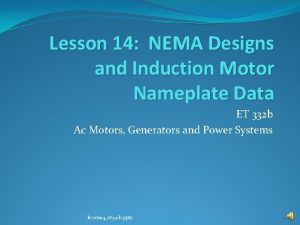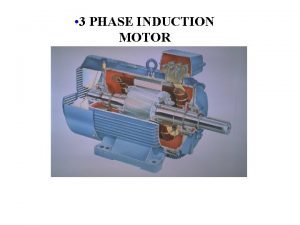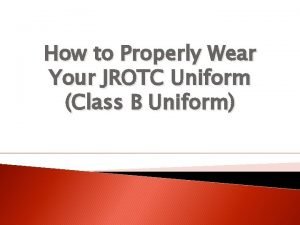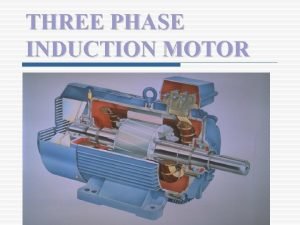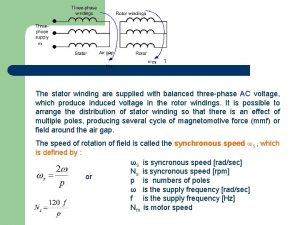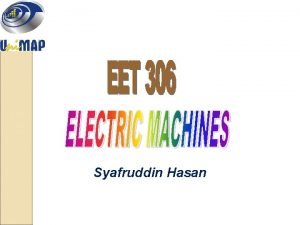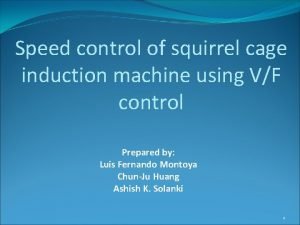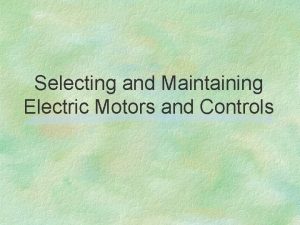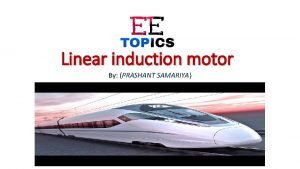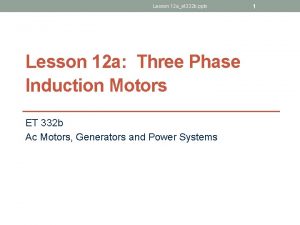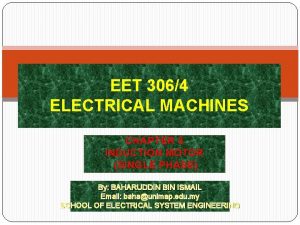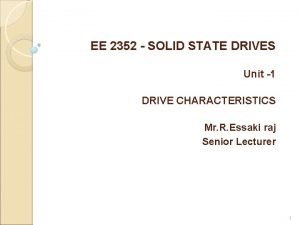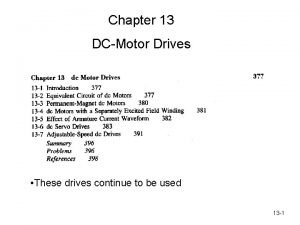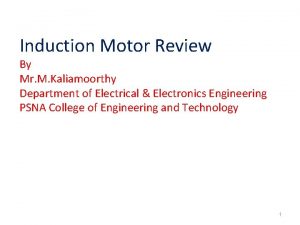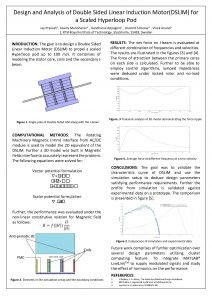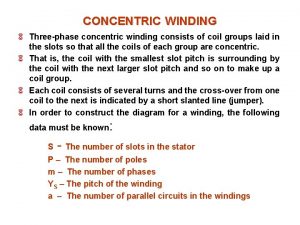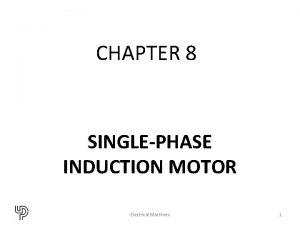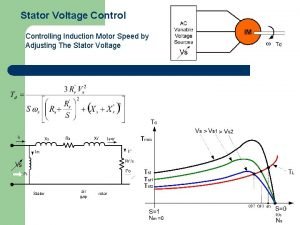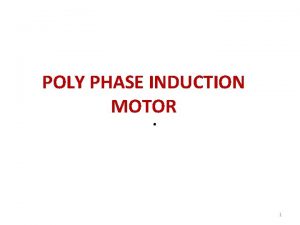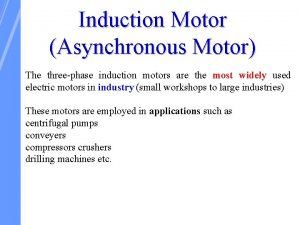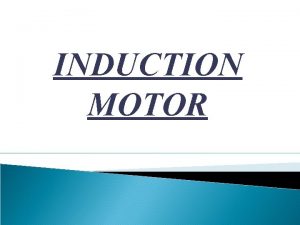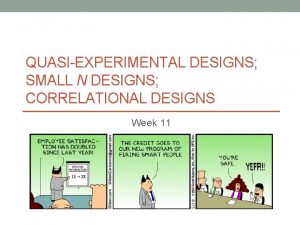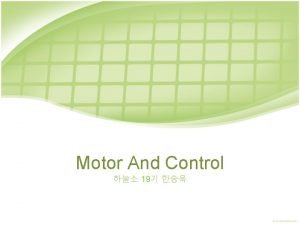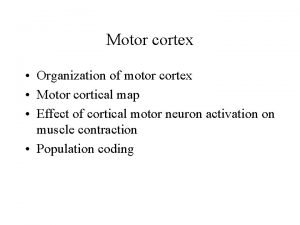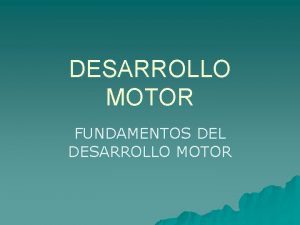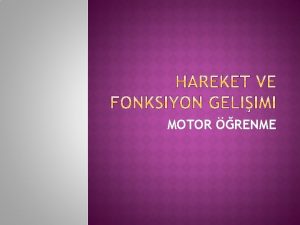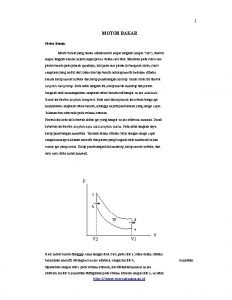Lesson 14 NEMA Designs and Induction Motor Nameplate


















- Slides: 18

Lesson 14: NEMA Designs and Induction Motor Nameplate Data ET 332 b Ac Motors, Generators and Power Systems lesson 14_et 332 b. pptx 1

Learning Objectives After this presentation you will be able to: Ø Ø Ø List the characteristics of NEMA Design motors. Identify and interpret motor nameplate data. Use k. VA codes to compute motor starting currents. Explain the effects of reduced motor voltage and frequency on machine performance. Compute the changes in motor speed and torque when voltage and frequency change. lesson 14_et 332 b. pptx 2

NEMA Motor Designs Different motor conductor designs given different rotor resistances, which gives different motor characteristics Design A - Starting torque 150% rated; breakdown torque 275% Starting current 7 -10 times rated current Design B - Starting torque approx. 150% rated; breakdown torque 225%; starting current < 6. 4 times rated. Most commonly used motor design lesson 14_et 332 b. pptx 3

NEMA Motor Designs Design C - High starting torque motors; starting torque 240% to 275% of rated; starting I < 6. 4 time I rated Design D - High slip motors. Very high starting torques 275300% of rated. Speed operates at 85 -95% rated; slip 5 -15%. Used to start high inertial loads Very low starting current, near rated at start. lesson 14_et 332 b. pptx 4

Motor Nameplate Data Nominal Efficiency - minimum efficiency that is guaranteed for design class. Given for one value of output - rated Design Letter - indicates NEMA design type A, B, C, D Service Factor - (S. F. ) number that indicates the maximum permissible loading lesson 14_et 332 b. pptx 5

Motor Nameplate Data Insulation Class - specifies maximum allowable temperature rise for motor windings Code Letter - means of determining the expected locked-rotor inrush current at rated voltage and rated frequency lesson 14_et 332 b. pptx 6

Motor Nameplate Data Code Letter k. VA Table Code Letter k. VA/hp A 0 -3. 15 K 8. 0 -9. 0 B 3. 15 -3. 55 L 9. 0 - 10. 0 C 3. 55 -4. 0 M 10 -11. 2 D 4. 0 -4. 5 N 11. 2 -12. 5 E 4. 5 -5. 0 P 12. 5 -14. 0 F 5. 0 -5. 6 R 14. 0 -16. 0 G 5. 6 -6. 3 S 16. 0 -18. 0 H 6. 3 -7. 1 T 18. 0 -20. 0 J 7. 1 -8. 0 U 20 -22. 4 V >22. 4 Above can be used to compute the range of starting currents lesson 14_et 332 b. pptx 7

Starting Current k. VA Codes Use k. VA codes to find the range of motor starting currents Where: VLL = line-to-line voltage applied to motor terminals IL = line value of starting current. hp = rated motor horsepower k. VA comes from given table Example: G = 5. 6 -6. 3 k. VA/hp lesson 14_et 332 b. pptx 8

Starting Current k. VA Codes Example 14 -1: A NEMA design motor is rated at 150 hp at 460, 60 Hz. It has a rated current of 163 A and a nominal efficiency of 96. 2%. The locked rotor code is G. Find the range of starting current that can be expected from this machine. Range for code G 5. 6 -6. 3 k. VA/hp Low value of k. VA High value of starting current Low value of starting current A A Range lesson 14_et 332 b. pptx 1054. 3≤ Ilr ≤ 1186. 1 9

Effects of Reduced Terminal Voltage and Frequency Machines can operate +- 10% of rated terminal voltage without significant change in characteristics. Motor rated voltage 460 V, Supply voltage 480 V Generally must change both voltage and frequency to maintain torque-speed characteristic (constant flux) (Can't vary terminal voltage for speed control) lesson 14_et 332 b. pptx 10

Effects of Changing Voltage and Frequency on Torque Use the following empirical formula Where: TD = motor developed torque V = motor terminal voltage f = motor operating f s = per unit slip k = proportionality constant Torque proportional to V 2, s and inversely proportional to f lesson 14_et 332 b. pptx 11

Example 14 -2: A 3 -phase 460 V, 20 HP, 60 Hz, 4 pole motor drives a constant torque load at rated shaft power at rated voltage, and frequency. The motor speed under these conditions is 1762 RPM. A system disturbance lowers the motor voltage by 10% and the system frequency by 6%. Find: a. ) the new motor speed; b. ) the new shaft power. Assume that the mechanical losses (Pfw and Pstray) are constant. lesson 14_et 332 b. pptx 12

Example 14 -2 Solution (1) Define equations For 10% voltage reduction Find s 1. This requires synchronous speed lesson 14_et 332 b. pptx 13

Example 14 -2 Solution (2) Compute slip for 1 st case Constant torque load so equate torques Solve for s 2 lesson 14_et 332 b. pptx 14

Example 14 -2 Solution (3) Compute the value of s 2 Per Unit produces the same result lesson 14_et 332 b. pptx 15

Example 14 -2 Solution (4) Need synchronous speed for second case Now compute the new motor speed lesson 14_et 332 b. pptx 16

Example 14 -2 Solution (5) Solve part b. P 1=rated horsepower=20 hp Ts 1 = shaft torque state 1 Ts 2= shaft torque state 2 For constant torque load Ts 1=Ts 2 lesson 14_et 332 b. pptx 17

End Lesson 14: NEMA Designs and Induction Motor Nameplate Data ET 332 b Ac Motors, Generators and Power Systems lesson 14_et 332 b. pptx 18
 Nema design letter
Nema design letter 3-phase induction motor problems and solutions
3-phase induction motor problems and solutions How to iron jrotc uniform
How to iron jrotc uniform It the most prominent text element after the nameplate.
It the most prominent text element after the nameplate. Rotor frequency formula
Rotor frequency formula Air gap power in induction motor formula
Air gap power in induction motor formula Power flow diagram of induction motor
Power flow diagram of induction motor Speed control of squirrel cage induction motor
Speed control of squirrel cage induction motor Repulsion start induction run motor
Repulsion start induction run motor Construction of linear induction motor
Construction of linear induction motor Torque of induction motor formula
Torque of induction motor formula Air gap power in induction motor formula
Air gap power in induction motor formula 4 quadrant operation of induction motor
4 quadrant operation of induction motor 4 quadrant operation of induction motor
4 quadrant operation of induction motor Starting torque of induction motor
Starting torque of induction motor Double sided linear induction motor
Double sided linear induction motor Concentric winding diagram
Concentric winding diagram Single phase induction motor
Single phase induction motor Stator voltage control of induction motor
Stator voltage control of induction motor
